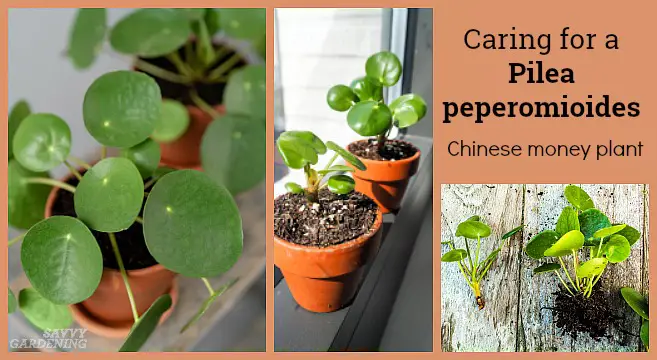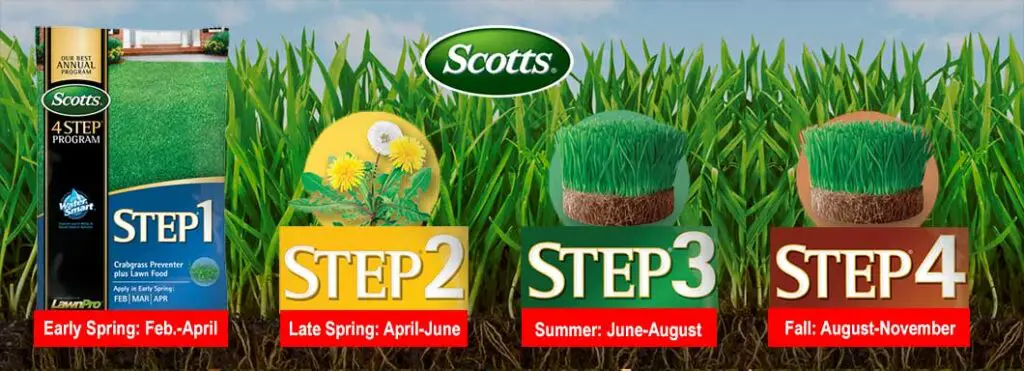To transfer a money plant from water to soil is a simple process. Gently remove the plant from the water and place it in a pot with fresh soil.
Money plants are one of the most popular indoor plants due to their low maintenance and decorative foliage. After a while, the plant may outgrow its water container and require transplantation to soil. This process is simple yet requires care to avoid damaging the plant’s delicate roots.
In this article, we will guide you through the step-by-step process of transitioning your money plant from water to soil, including the best time to transfer, soil selection, watering tips, and more. Whether you are a seasoned gardener or new to the art of indoor gardening, this guide will help you successfully transfer your money plant.

Credit: www.youtube.com
Preparing To Transfer The Money Plant
Transferring a money plant from water to soil can be a tricky process, but with the right preparation, it can be done smoothly. Here are some crucial steps to follow while preparing to transfer your money plant from water to soil.
Choosing The Right Soil And Pot
When it comes to choosing the right soil and pot for your money plant, there are several factors to consider. Here are some key points to keep in mind.
- Factors to consider while choosing soil:
- Soil ph: The ph level of the soil should be between 6 to 7 for optimum growth of the money plant.
- Nutrient content: The soil should be nutrient-rich and well-draining for proper growth.
- Texture: The texture of the soil should be light, airy and loamy to provide the necessary moisture and aeration to the roots.
- Factors to consider while choosing a pot:
- Size: The pot size should be appropriate for the size of the money plant; a pot that is too small can restrict the growth of the plant.
- Drainage holes: The pot should have adequate drainage holes to prevent waterlogging and root rot.
- Material: Choose a sturdy and durable material for the pot, such as ceramic or terracotta, to provide stability and prevent breakage.
Preparing The Pot
Once you’ve chosen the right soil and pot, it’s important to prepare the pot for the money plant. Here are some key points to keep in mind.
- Filling the pot with soil: Fill the pot with nutrient-rich soil, leaving a gap of about an inch between the top of the soil and the rim of the pot.
- Creating adequate drainage: Add a layer of pebbles or stones at the bottom of the pot to provide adequate drainage and prevent waterlogging.
- Adding fertilizer: Add a slow-release fertilizer to the soil to provide nutrients to the plant over time.
- Preparing the root ball: Before transferring the money plant to the pot, make sure to carefully remove it from the water and gently untangle the roots to prepare the root ball for planting.
Following these steps while preparing to transfer your money plant from water to soil can help ensure its healthy growth and longevity. Happy planting!
Removing The Plant From Water
Transfer Money Plant From Water To Soil
If you’re a gardening enthusiast or just a plant lover, you might have come across money plants. Known for their lush foliage and abundance of air-purifying properties, money plants are quite easy to take care of. One of the essential steps to caring for these indoor plants is transferring them from water to soil, and this post will guide you on how to do it right.
Our post will concentrate on the subheading: removing the plant from water, focusing on timing, how to remove the plant without damaging its delicate roots, and preparing the plant for transition.
Timing: When Is The Right Time To Transfer The Plant?
Timing is crucial when it comes to transplanting plants, and money plants are no exception. It’s essential to give your plants ample time to develop roots and get acclimatized to their new environment. Here are some ways to know when the time is right:
- Check for roots: Before transferring your money plant, ensure that it has enough roots to support its growth. Check the roots to ensure they are thick, white, and long enough, and there is no sign of mold or disease.
- Look for above-ground growth: Pay attention to the plant’s above-ground growth. A healthy money plant should have lush green foliage that’s well-spread.
- Know the water change frequency: If you’ve been changing your money plant’s water frequently, it might be time to transfer it to soil. A general rule of thumb is six months in water, and then transfer to soil.
How To Remove The Plant From Water Without Damaging Its Delicate Roots
Removing your money plant from water is quite delicate, and if not done right, it could lead to root damage. Here’s how to do it correctly:
- Gently remove the plant from water
- Use clean water to wash off all the old water from the roots and stem
- Carefully separate the roots and ensure that you remove any dead or diseased roots
- Ensure that you handle the plant gently to avoid any damage
Preparing The Plant For Transition
To ensure that you successfully transplant your money plant, follow these tips:
- Choose the right pot: Choose a pot that’s slightly larger than the previous one, has sufficient drainage holes, and allows for proper aeration.
- Prepare the potting mix beforehand: The right potting mix should be well-draining, have enough moisture retention properties, and be nutrient-rich.
- Planting: Once you’ve chosen the potting mix, add it to the new pot. Carefully place the money plant into the new pot and add more soil mix to cover the roots completely.
Transplanting your money plant from water to soil is quite simple, but it requires care and attention to detail. Follow these guidelines to ensure that your money plant thrives in its new environment.
Transferring The Plant To Soil
Step-By-Step Guide To Transplanting The Plant To The Soil
Before transplanting your money plant into soil, you must ensure that the new soil is evenly moist. Here is a step-by-step guide to help you transplant your plant:
- Choose a well-draining, nutrient-rich soil mixture that is suitable for your plant type.
- Using a shovel, dig a hole in the soil that is deep enough to accommodate the plant’s entire root system.
- Carefully remove the plant from the water, ensuring not to damage its roots.
- Gently remove any excess water from the plant’s leaves and roots.
- Place the plant’s root ball in the center of the hole and cover it with soil.
- Firmly tamp the soil around the roots.
- Water the newly transplanted plant thoroughly to help it settle into the soil.
Tips For Handling The Plant Gently And Minimizing The Risk Of Transplant Shock
Transplanting your money plant may cause transplant shock, a condition that results in the plant’s wilting or drooping. To ensure a successful transfer, you must be gentle and minimize the risk of transplant shock. Here are some tips to follow:
- Water the plant a few hours before transplanting. This will ensure that the plant is hydrated, making it less prone to transplant shock.
- Handle the plant’s roots gently. Try not to pull, tug, or tear the roots.
- Do not shake or disturb the plant’s root ball too much, as this will disrupt the plant’s root structure and cause transplant shock.
- When planting the plant into the soil, be sure to plant it at the same depth it was previously growing.
- Water the newly transplanted plant regularly until it establishes itself in the soil.
By following these tips, you can minimize the risk of transplant shock and ensure the successful transfer of your money plant.
Watering The Plant Immediately After Transplanting
Watering your money plant after transplanting it into soil is crucial for its growth and development. The plant will need time to establish itself in the soil, and adequate watering is essential for this process. Here are some tips for watering your newly transplanted plant:
- Water the plant immediately after transplanting it into the soil.
- Ensure that the soil is evenly moist, but not waterlogged.
- Do not overwater the plant, as this can lead to root rot and other problems.
- Water the plant regularly, especially during the first few weeks after transplanting, to help it establish itself in the soil.
Proper watering is vital for the health and growth of your money plant. By watering it regularly and providing the right amount of moisture, you can help your plant thrive in its new home.
Post-Transfer Care
Caring For The Plant In The Days And Weeks Following The Transfer
After transferring your money plant from water to soil, it is important to provide it with the proper care. Here are some things to keep in mind:
- Water your plant thoroughly immediately after transferring it to soil. Ensure the soil is moist but not waterlogged.
- Keep the plant in a well-lit area, away from direct sunlight.
- Maintain a consistent temperature around the plant to avoid any sudden temperature fluctuations.
- Prune any unhealthy leaves or stems to encourage new growth.
- Fertilize the plant once every two weeks to encourage growth.
Common Problems That May Occur During This Period And How To Solve Them
While transferring the money plant from water to soil, a few common problems may arise. Here’s how to solve them:
- Root rot: If the plant is overwatered or the soil is not well-draining, it may cause root rot. Cut away any unhealthy roots and repot the plant in fresh, dry soil.
- Pests: Pests such as spider mites or mealybugs may occur. Isolate the plant and treat it with insecticidal soap or neem oil.
- Wilting leaves: Wilting leaves may be an indication of under-watering, over-watering, or pest infestation. Inspect the plant and make appropriate changes.
Tips For Monitoring The Plant’S Growth
Monitoring the plant’s growth is crucial to ensure its well-being. Here are some tips:
- Keep a regular watering and fertilizing schedule to encourage growth.
- Observe the plant’s leaves and stem. Any changes in color or texture could indicate a problem.
- Keep an eye out for new growth, such as new leaves or stems.
- Repot the plant in a larger container if it outgrows its current one.
By following these tips, your money plant will thrive in its new soil environment. Remember, patience and consistency are key to a healthy plant.
Frequently Asked Questions On Transfer Money Plant From Water To Soil
How Do You Transfer A Money Plant From Water To Soil?
To transfer a money plant from water to soil, remove the plant from the water and let it dry. Plant it in a pot with well-draining soil and water it thoroughly. Keep the plant in a bright but indirect light place and water it once a week.
Can You Transfer A Money Plant From Water To Soil Anytime?
Yes, you can transfer a money plant from water to soil anytime, except when the plant is flowering. During the propagation of the money plant, the roots grow well in water but it’s best to transfer it to a container filled with soil after it has developed roots.
How Do You Care For A Money Plant After Transferring It To Soil?
After transferring a money plant from water to soil, place the plant in a bright but indirect light area and water it once a week or when the soil feels dry. Ensure the pot has drainage holes to prevent waterlogging and use well-draining soil.
Fertilize the plant once a month.
How Long Does It Take For A Money Plant To Adjust To Soil?
It takes a money plant around 2 to 4 weeks to completely adjust to soil after being transferred from water. Make sure to provide it with optimal growing conditions of ample sunlight, water, and fertilizer during this period.
Can You Propagate A Money Plant Using Soil?
Yes, money plants can be propagated using soil. Take a healthy stem cutting with at least one mature leaf and place it in well-draining soil, keep it moist but not waterlogged. The stem cutting should develop roots within 2-4 weeks.
Conclusion
After going through this detailed guide, it’s clear that transferring a money plant from water to soil isn’t rocket science. With the right tools, techniques, and patience, anyone can do it with ease. Remember to take care of your plant and provide it with the right moisture, light, and nutrients to thrive in its new habitat.
The transformation from a water plant to a soil plant is an exciting one, and with the right care, your money plant will flourish in no time. In addition, it’s worth noting that whether you transfer your money plant from water to soil or vice versa, ensuring that it gets adequate care and attention will play a major role in how well it grows.
So, follow these tips, be gentle with your money plant, and revel in the magic of growing your own beautiful greenery.




